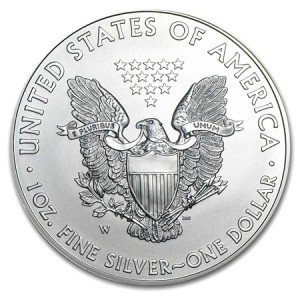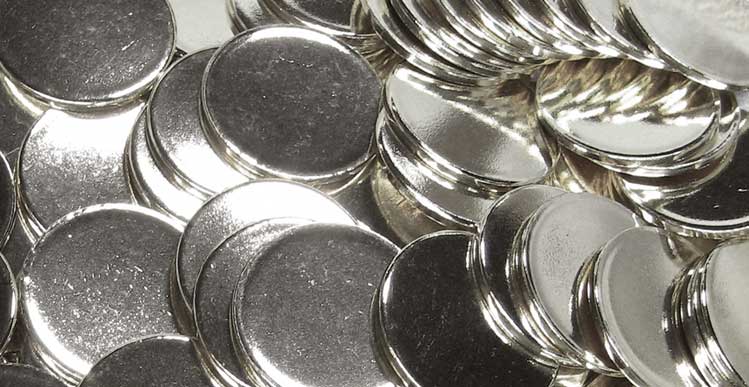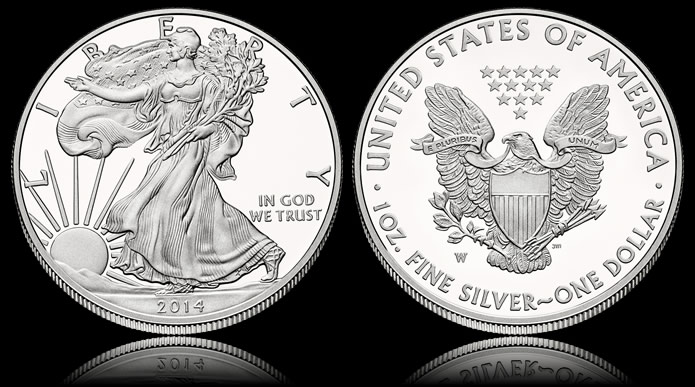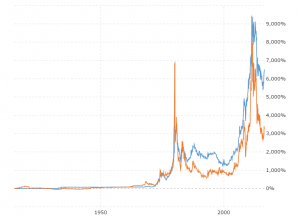What Is A Burnished Coin?
Coins come in a variety of different types and grades. Circulated coins are the common coins you’ll have rolling around in your pockets or purses and are used on a daily basis to purchase goods. Uncirculated coins are produced the same way as circulated coins, but they have never been put to use or into circulation, thus maintaining their “newness.” Proof coins are meant as collectors or show pieces and were never meant to be used in circulation. Burnished coins are an extension of both uncirculated and proof coins in that they were meant primarily as show pieces, but with an added step to create a different visual effect. Below we’re going to discuss what a burnished coin is, how it’s made and how you can identify one.
What Is A Burnished Silver Eagle?
 When speaking about burnished coins, the most common questions is “What is a burnished Silver Eagle?” That is because the burnishing process was introduced into the United States Mint’s product line in 2006. That year, the U.S. Mint began producing burnished American Eagles in silver, gold and platinum. Because Silver Eagles are the most popular silver bullion coin in the world, burnishing was thrust into the limelight. All burnished coins from the United States Mint carry the “W” mint mark and have been struck at the West Point Mint.
When speaking about burnished coins, the most common questions is “What is a burnished Silver Eagle?” That is because the burnishing process was introduced into the United States Mint’s product line in 2006. That year, the U.S. Mint began producing burnished American Eagles in silver, gold and platinum. Because Silver Eagles are the most popular silver bullion coin in the world, burnishing was thrust into the limelight. All burnished coins from the United States Mint carry the “W” mint mark and have been struck at the West Point Mint.
How Is A Burnished Coin Made?
In the case of Silver Eagles, before the silver blanks (also known as “planchets”) are struck they must first be burnished. These blanks are subjected to a polishing process that involves being placed in a large spinning drum that is loaded with polishing media (millions of tiny 6mm balls or in the past, wet sand).
The continued friction from the polishing media creates a smooth matte-like surface on the silver blanks. The matte-finish silver blanks are then carefully handled manually, one at a time by handlers using white gloves to avoid marring the coin surface with any oils or dirt from the skin. The blanks are loaded into the the striking machine to produce the Burnished American Silver Eagles that you are familiar with.
What Does A Burnished Coin Look Like?
Because the blanks go through the added burnishing process, Burnished American Silver Eagles have a unique finish to them. The striking of the coin added with the burnished blank leaves a softly frosted look to the coin. Many say that the detailed strike of the coin seems to float above the mirror-like field. If you’re looking at an American Eagle after 2006 (Silver, Gold, or Platinum) the dead give away is the “W” mint mark.












I have a number of 1986 burnish or toned Silver Eagles. Could these possibly be counterfit. They were purchase by me from a local well known large coin dealer. I recently found out that burnished silver eagles were first produced in 2006 only at the west point mint, is that true? I have seen 1986 burnish eagles grd. by PCGS and NCG.